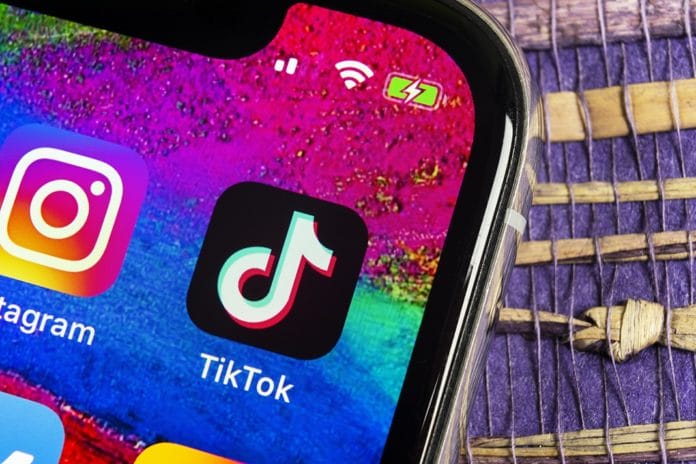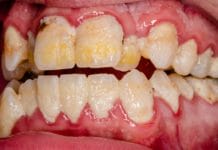Dental professionals are most likely aware of TikTok, the social network for video sharing. The TikTok application (app) allows users to post videos of themselves, often doing silly things. The app also allows you to interact with other users’ videos and make comments.
With some silly videos, the danger is evident as people have been hurt. Another distressing issue is that some users will record and post unsolicited and hurtful actions against friends or families.
Recently, two articles caught the attention of dental professionals. The articles’ contents were posted in the Daily Mail and the Washington Post, prompting two dentists to respond in the comments on behalf of dentistry. The articles talked about how TikTok users were filing down their teeth with nail files and posting videos of them doing the deed.
Oral care professionals would be interested in the reason why teens are carrying out this behavior. One is the need to go “viral” and get a lot of followers in pursuit of the hope of making money from the production of the video. More importantly, the teeth filers are filing their own teeth to avoid proper dental treatment either during the COVID-19 pandemic or dental cost-cutting measures. The ultimate outcome desired is to address the tooth/teeth unevenness in relation to the tooth/teeth beside it. Teens and others doing this say that it allows their smiles to be cosmetically “perfect.”
The highest percentage of TikTok users are teenagers and young adults up to age 24. However, although there are age restrictions on posting videos, some tweens are participating by using misleading birthdates.
Patient Education
Dental hygienists are aware of the problems that can ensue from such activity as filing down teeth. Sensitivity, fractures, and craze lines are just some of the outcomes.
Craze lines are superficial, vertical lines that appear in tooth enamel, usually as people age. They can be referred to as hairline cracks or surface cracks. These lines can present as translucent or may appear gray, yellow, or brown with staining from food and drink. Although these craze lines do not always lead to fractures, some people do not like the way they look. This finding is mostly in middle- or older-aged adults due to the years of eating and causing biting pressure on the front teeth. Additionally, regular bruxism, uneven tooth line, nail-biting, injury or trauma, or chewing on ice can produce the same effects.
The bottom line is that most TikTok users in the age bracket noted above are more concerned with the way they look right now than the possible long term consequences. Crooked or misaligned teeth are seen to be less than perfect. Perfect equates movie star smiles. Without seeking professional advice, they may tend to watch videos on social media for ideas.
Social media such as TikTok are easier and quicker to access than getting information from professionals. Even typing in “teeth straightening” in Google does not give a direct dental driven message in a few short words. Youths demand instant and short versions of messages rather than reading detailed, wordy descriptions with cause and effect pointed out.
Getting dental messages out to the public, in general, is a difficult thing to do. Simple messages with a shorter wait time for results with the newer orthodontic aligners go by the wayside when something sensational and even quicker comes along.
Dental professionals have been advocating the use of toothpaste with fluoride and regular interdental cleaning in many dental-related articles, and manufacturers of dental products have television advertisements promoting oral care. However, dental professionals still see patients with poor oral hygiene practices even after we have educated them on good habits.
Dental hygienists are aware of the frightening outcomes from self-administered efforts to improve teeths’ appearance − sensitivity and even nerve damage with tooth death. Patients often complain of sensitivity when they come in for treatment. Usually, they want a quick fix and that is countered with a temporary desensitizer such as fluoride varnish or other types of brush-on applications.
Sensitivity is an irreversible effect of the filing of teeth. Over the passage of time, the tooth may become discolored and may cause pain. This may result in unwanted and unnecessary dental treatment, such as root canals and crowns. TikTok users are generally unaware of the repercussions of the nail file quick fix. They may not be well versed in appropriate dental home care, such as brushing, interdental cleaning, and regular dental visits. Details of dentistry are not easily disseminated to the general public to a larger extent than a dental student studies to gain a license. Sensitivity does not seem as devastating as the death of a tooth and even more costly procedures in the long run.
How can we spread the message that enamel does not grow back like hair or fingernails? Dental professionals may need to promote our knowledge about the protection of teeth. Our general patient pool may not realize that teeth are not like hair or fingernails. We may have underestimated the general population’s knowledge of dentistry. We all cut our fingernails and are appalled at how fast they grow back. Do we need to elaborate that teeth are finite, unlike a bad haircut that grows out in our efforts to educate? As humans, we get one free, permanent set of teeth, and replacements are not easy or inexpensive.
Education, education, education. Nail files have always been around, as well as pliers. But it is only in extreme cases that a human will use pliers to extract a tooth! How does one ensure the correct usage of any tool? How can we gauge the extent to which people react to social media? The parents? It is a different world we live in, and parents are not the sole authority on what kids should do, nor are they aware of behaviors that they do not see on social media.
The teens? Do we really know how to educate? Or, are we deterred by the wealth of knowledge we hold but need additional time and energy to disseminate it? In what ways do we have to spread education about teeth other than what we are now doing? How to send the message?
Technology is wonderful, but it also spreads misinformation. Not everyone can determine what is actually sound science and helpful compared to what can do harm and is not based on facts or science when doing a Google search. In essence, there are more questions than there are answers in the new world we currently live in.












